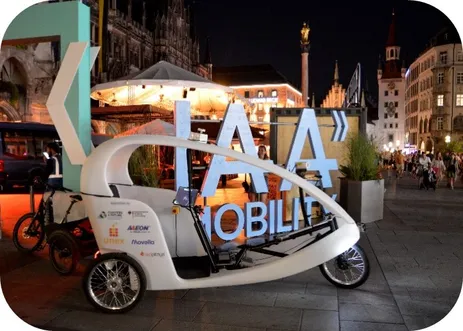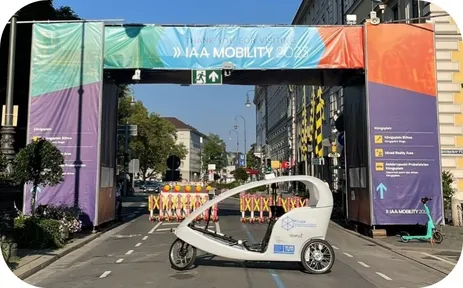Follow us on LinkedIn for the latest news!
News (Archive)
A Self-Driving Cycle Rickshaw For Autonomous Urban Passenger And Freight Transport
The Chair of Traffic Engineering & Control is leading the development of an innovative fully connected and automated three-wheeled cycle rickshaw. The rickshaw is used for transporting passengers, logistics parcels, or a combination. For this purpose, the rickshaw is equipped with an electric power train system, including a lithium accumulator and actuators for braking, propulsion, and the steering of the front wheel. The environmental sensing is currently realized via LiDAR sensors mounted on the roof of the rickshaw, observing the 360-degree surroundings of the vehicle. Equipped with a state-of-the-art onboard unit for V2X communication and remote-control access in overstress situations for trajectory planning and self-driving functionality, the rickshaw represents a fully equipped, connected, and automated vehicle for urban road traffic.
Currently, the rickshaw has been tested in field trials in the urban environment and shows a substantial potential to increase the productivity, reliability, and flexibility of logistics and transport services. A higher degree of automation in logistics and freight transport – within this prototype implementation realized by the self-driving functionality – allows for a more cost-efficient operation of logistics fleets and businesses. Additionally, less weight due to the absence of a driver also leads to reduced energy consumption.
The developed self-driving rickshaw allows for automating first- and last-mile logistics services and passenger transport with reduced costs. First user studies showed a high user acceptance and reliability of the system.










